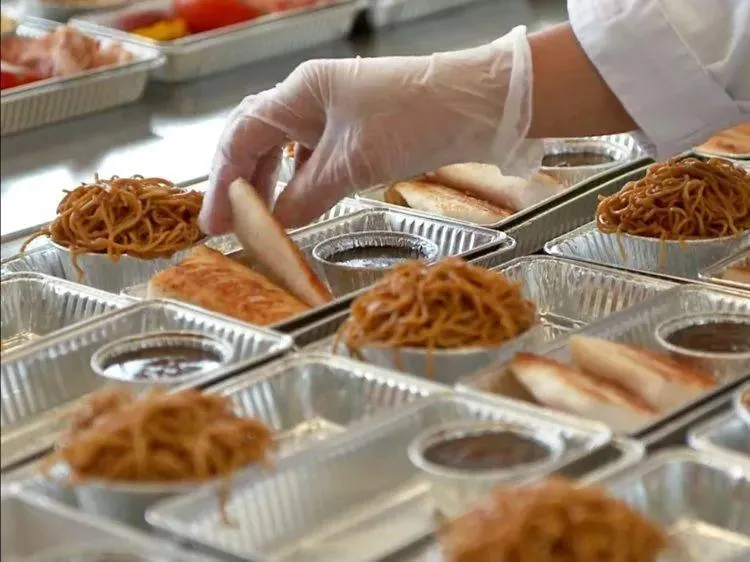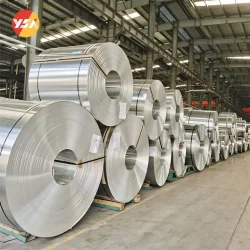Airline food containers have strict requirements for safety and hygiene. Aluminum containers are the most popular food containers for airplane meals. But why not use plastic food containers? Are plastic food containers not light enough? Why not ceramic and wooden food container, which have a fancier look?
Aluminum Containers vs. Ceramic Containers

Ceramic food container in the 20th century was the most popular food container material for airplane meals, airline meals belonged to the category of luxury goods at that time, in order to ensure that the travelers’ dining experience, the meals at that time were served on ceramic trays, and the flight attendants carried ceramic food containers to distribute the meals, but there were a lot of inconveniences, and then the massification of air transport, ceramic food containers faded out of the public’s field of vision.
1. Weight and portability: Ceramic food containers are relatively heavy and are not suitable for use in air travel and other scenarios that require weight and portability considerations. In contrast, aluminum containers are lightweight and portable, which reduces extra weight and makes them easier for passengers to carry and use.
2. Fragility: Ceramic food containers are fragile and prone to breakage during transportation and use. In the aviation industry, there is a need to use durable food containers that can withstand crushing and impact. Aluminum containers have high strength and durability to meet the requirements of airline food service.
3. Temperature control: Ceramic food containers may not be as effective as aluminum containers in the heating process. Aluminum foil has good thermal conductivity and can transfer heat quickly as well as maintain the temperature of the food to a certain extent. This is especially important when serving hot food during air travel.
4. Hygiene and cleanliness: Ceramic food containers can be more cumbersome to clean and sanitize. Aluminum containers are disposable and can be recycled after use without the need for an additional cleaning process, reducing hygiene issues and crew workload.
Indeed, ceramic can be heated at high temperatures and has an elegant look and feel. The food container of business class and first class is all kinds of high-grade bone china. However, the cost of various types of ceramics is extremely high, and it is not possible to one-time use, cleaning costs are extremely high, and the other ceramic utensils products heavy, will increase the aircraft fuel. So in the aviation industry, aluminum container lightweight, durability, thermal conductivity and hygiene convenience and other factors make it a better choice.

Aluminum Container vs. Wooden Container
Wooden cutlery also appeared for a while in the history of the aviation industry, but was quickly phased out in the development.
1. Hygiene and Cleanliness: Wooden food containers can be challenging most notably in terms of hygiene and cleanliness. Wood surfaces can easily absorb and harbor bacteria and even mold, making them relatively difficult to clean. This can lead to hygiene issues and food safety hazards.
2. Durability and reusability: Compared to plastic or aluminum foil, wooden food containers are often less durable and can be easily damaged or deformed by long-term use. In the airline scenario, wooden food containers are not a suitable choice.
3. Weight and portability: Wooden food containers are relatively less lightweight than aluminum foil or plastic food containers. In the airline industry, weight is an important consideration as airlines need to minimize the load on the aircraft to reduce fuel consumption.
4. Temperature control: Wooden food containers have less ability to maintain the temperature of the food. In contrast, aluminum containers have good thermal conductivity and can better maintain the temperature of food.
While ceramic and wood utensils may be more upscale and decorative in appearance, they are generally not suitable for airplane meal service in the airline industry. Ceramic food container may be too fragile, increasing the risk of breakage and splintering. Wooden food container, on the other hand, may not meet food contact safety standards and is not easy to clean and sanitize.
In the airline industry and in most food service scenarios, plastic and aluminum containers are often preferred because they offer better sanitation, durability, portability and temperature control.

Aluminum Containers vs. Plastic Containers
1. Environmentally friendly: Aluminum foil is a recyclable material that can be recycled and reused after use. In contrast, plastic food containers are usually non-biodegradable and pose a greater burden on the environment. By choosing aluminum containers, you can reduce the use of plastic and lower the environmental impact of plastic waste.
2. Food safety: Aluminum foil has good barrier properties and can effectively protect food from external contamination and oxidation. In contrast, plastics may release chemicals that have a potential impact on food safety. In order to control the release of microplastics and toxic substances when ordinary plastics are heated, plastic food containers are often more costly and have used more expensive heat-resistant materials. Aluminum containers, on the other hand, are widely recognized as a safe, reliable and cost-effective option in the food packaging process.
3. Thermal conductivity: Aluminum foil has good thermal conductivity, which allows it to transfer heat quickly and maintain the temperature of the food. This makes aluminum containers more effective in serving hot food, maintaining the taste and temperature of the food. Plastic food containers, on the other hand, may melt when heated at high temperatures and even release microplastics and toxic substances, making them less suitable for pre-prepared, refrigerated dishes like airline meals that require heating.
4. Strength and durability: Aluminum containers are relatively strong and durable, able to withstand a certain amount of weight and pressure, tensile and not easy to break. This makes them very suitable for the airline industry for easy transportation and distribution.
Obviously plastic food containers are not suitable, most plastic food containers cannot be used for high temperature heating and will migrate toxic substances if heated.

Lightweight and safe, environmentally friendly and economical, the advantages of aviation aluminum containers are obvious. Convenient to use, easy to shape, safe and hygienic, no odor, no leakage; with good and uniform thermal conductivity and heating effect, it can be used for heat sources such as grill, oven, steamer and directly heated on the original packaging.
Aluminum containers can withstand temperatures up to 240+. These food containers are used for quick distribution of meals during flights, they are lightweight, not easy to be damaged and due to the soft nature of aluminum foil, the foil food containers can be tightly fitted with the lid to prevent food leakage during high altitude flights. Airline aluminum containers are easy to paint and stretch, and can be easily printed with airline logos and slogans using molds, and personalized according to the airline’s brand image.
Aluminum foil is a recyclable material, aviation aluminum container has good environmental advantages. Recycling and reusing aluminum foil helps to reduce resource consumption and environmental impact, which is in line with the principle of sustainable development.
Aviation aluminum containers can be used for both hot and cold meals. They are able to maintain the temperature and freshness of food, and can satisfy passengers’ needs whether they are serving hot meals, hot drinks or cold delicacies.Aviation aluminum containers are one of the key food packaging solutions in the air service industry. They provide convenient, safe and efficient food service, ensuring passengers enjoy delicious meals during air travel.
Aluminum containers should have a clean surface, flat shape, uniform color, no spots, no roll marks, no oil stains and no holes. Yongsheng Aluminum focus on aluminum foil for 25 years, the main products are aluminum foil, aluminum foil finished food container, aluminum coil, aluminum plate, mirror aluminum, embossed aluminum, oxidized aluminum, aluminum strip, all kinds of colored aluminum, welcome to inquire, 24-7 at your service~

